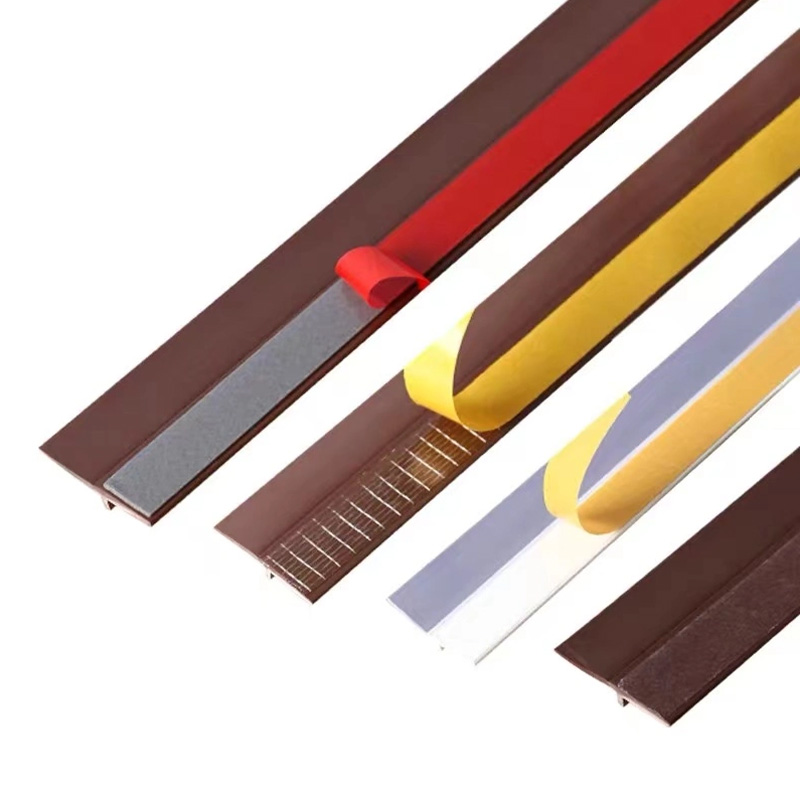weather strips for doors
Understanding Weather Strips for Doors Importance, Types, and Installation
Weather strips for doors are often overlooked components of home improvement and energy efficiency. However, they play a crucial role in maintaining comfort within our homes, reducing energy bills, and prolonging the lifespan of heating and cooling systems. In this article, we will explore what weather strips are, the different types available, their benefits, and some tips on installation.
What Are Weather Strips?
Weather strips are materials installed around doors to seal gaps and prevent air leaks. These strips work by cushioning the space between the door and its frame, creating a barrier that keeps outside elements from entering the home. They can protect against cold drafts in the winter, hot air in the summer, and also deter dust, water, and noise from infiltrating living spaces.
Benefits of Weather Strips
1. Energy Efficiency One of the primary advantages of installing weather strips is the energy savings they provide. By sealing gaps, they minimize the amount of heated or cooled air that escapes from your home. This translates to less strain on your HVAC system, leading to reduced energy bills.
2. Enhanced Comfort Weather strips help maintain a consistent indoor temperature, ensuring that your home remains comfortable year-round. You won't have to deal with chilly drafts in the winter or an overly warm environment in the summer.
3. Noise Reduction Proper sealing around doors can also reduce noise pollution from the outside. If you live in a busy area, weather strips can significantly diminish the sounds of traffic, pedestrians, and other disturbances.
4. Moisture Control Installing weather strips can help prevent water infiltration during heavy rain or snow, protecting your home from potential damage such as mold growth or wood rot.
5. Increased Home Value Energy-efficient upgrades, including weather stripping, can enhance your home's resale value. A well-maintained home with reduced utility costs is more attractive to potential buyers.
Types of Weather Strips
There are various types of weather strips available, each suited for different applications and door types
1. V-Seal Weather Strips This type is made from flexible vinyl or rubber and is shaped like a V, providing a tight seal when the door is closed. They are ideal for doors with slight gaps and can be used on both hinged and sliding doors.
weather strips for doors

2. Foam Weather Strips Comprised of soft foam, these strips are compressible and often self-adhesive, making them easy to apply. They work well for irregular gaps but may wear out faster than other materials.
3. Metal Weather Strips Generally made from aluminum, these strips provide durability and a long lifespan. They are often used in conjunction with other materials, especially for heavier doors.
4. Tension Seals These strips use tension to create a tight seal between the door and the frame. They are typically spring-loaded and can be adjusted to fit different gaps.
5. Sweeps Door sweeps are installed at the bottom of a door to seal gaps between the door and the threshold. They can prevent drafts and moisture from entering, making them an essential element for exterior doors.
Installation Tips
Installing weather strips is a relatively easy DIY task that can yield significant benefits. Here are some tips to ensure proper installation
1. Measure Accurately Before purchasing weather strips, measure the gaps around your doors to determine the appropriate size and type needed.
2. Clean the Surfaces Ensure that the surfaces of the door and frame are clean and dry before applying weather strips for better adhesion.
3. Follow Instructions Always refer to the manufacturer's instructions for installation, as different types of weather strips may have specific requirements.
4. Check Alignment After installation, close the door to check for proper alignment and adjust as necessary. A good seal should not require excessive force to open or close the door.
5. Regular Maintenance Periodically check the weather strips for wear and tear, and replace them as needed to maintain an effective seal.
In conclusion, weather strips for doors are vital for enhancing comfort, improving energy efficiency, and protecting your home from external elements. By understanding the different types available and following proper installation techniques, homeowners can enjoy the numerous benefits these simple yet effective components provide. Investing in weather strips is a step toward a more energy-efficient and comfortable living space.
Share
-
Transforming Energy: Innovations in Pouch Cell ManufacturingNewsMay.13,2025
-
The Future of Slitting TechnologyNewsMay.13,2025
-
The Future of Car Battery ProductionNewsMay.13,2025
-
Revolutionizing Precision with Slitting MachinesNewsMay.13,2025
-
Innovations in Battery Assembly: The Future of Energy StorageNewsMay.13,2025
-
Durable and Efficient D Shaped Rubber SealsNewsMay.13,2025







